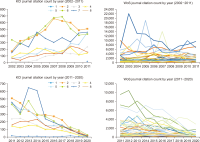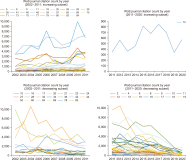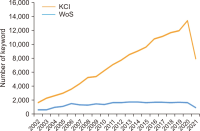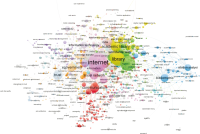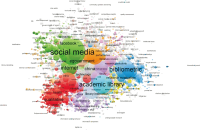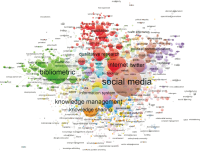
Vol.9 No.3
Abstract
In the current smart device-based information environment, information utilization is closely related to social capital. Additionally, the smart divide that occurs owing to the differences in use of smart devices has a significant influence on social capital. In this respect, this research empirically analyzed how the smart divide affects social capital construction. The study found that the level of and proficiency in using smart devices and diversity of the information formats used through smart devices affect social capital construction. Further, people who fully utilize smart devices can enhance their participation in social activities, social networks, and reciprocal activities, leading people to construct social capital in a wider range. Contrarily, those who are unable to use smart devices adequately may be disadvantaged in terms of the opportunity to construct social capital and share public interests. Thus, to maximize the intrinsic value of social capital, it is necessary to consider the factors of the smart divide as a complicated and multi-faceted digital divide and the ways to utilize social capital as a driving force for integrating society, and not as a mechanism for dividing members of society.
Abstract
Data innovation is at the core of the Fourth Industrial Revolution. While the catastrophic COVID-19 pandemic has accelerated the societal shift toward a data-driven society, the direction of overall data regulation remains unclear and data policy experts have yet to reach a consensus. This study identifies and examines the ideal regulator models of data-policy experts and suggests an appropriate method for developing policy in the data economy. To identify different typologies of data regulation, this study used Q methodology with 42 data policy experts, including public officers, researchers, entrepreneurs, and professors, and additional focus group interviews (FGIs) with six data policy experts. Using a Q survey, this study discerns four types of data policy regulators: proactive activists, neutral conservatives, pro-protection idealists, and pro-protection pragmatists. Based on the results of the analysis and FGIs, this study suggests three practical policy implications for framing a nation’s data policy. It also discusses possibilities for exploring diverse methods of data industry regulation, underscoring the value of identifying regulatory issues in the data industry from a social science perspective.
Abstract
The growing number of threats to society through the uncontrolled distribution of information is forcing library communities in many countries to reconsider their views on free access to collections. Based on the content of numerous documents of international importance, it can be concluded that in any democratic country access to information is one of the most important human rights, along with the right to life, liberty, and security of person. However, the state has the right to restrict citizens’ access to information within the framework of existing legislation. Constantly, restrictions on access to information are established in order to protect the ethical foundations of the constitutional order, morality, health, rights, and legitimate interests of others, to ensure the country’s defense and state security. It goes without saying that each country has the right to independently decide where the boundaries lie between permitted and prohibited information, including printed information, contained in library collections. This article describes three levels of access restriction: foreign, state, and regional. The authors have analyzed the legal and regulatory documents that govern libraries, as well as the reasons and methods of limitation. A comparative analysis of the restriction of access to information in the countries of Europe and Asia is presented.

Abstract
Knowledge and technology resources are the most crucial sources for the achievement of sustainable development in competitive advantage. Meanwhile, few empirical studies have clarified the types of knowledge and technology resources that nonprofit organizations (NPOs) use and develop. This study aims to categorize knowledge and technology resources in NPOs that both researchers and practitioners can use to develop the nonprofit sector further. A qualitative research method was used for the study. Data were collected from 31 interviews with senior and founding members of NPOs in Thailand. Analysis of qualitative data identified five critical categories of knowledge resources: human resources, organizational practices, partnership or stakeholder involvement, operational practices, and other resources. This study also illustrates both internal and external technology resources, which are used in sample organizations. The study’s findings contribute to developing a body of knowledge management literature related to the knowledge and technology resources of NPOs.

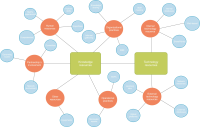

Abstract
We introduce a new research assessment measure, called the research excellence index. The measure, which we denote by RE-index, accurately assesses the research performance of a researcher. The methodology used in deriving the RE-index tackles many of the flaws of popular research performance indicators such as publication counts, citation counts, and the h and g indices. A dataset is introduced, which takes advantage of the wide coverage of Scopus and the Library of Congress, and, at the same time, deals with the Scopus database depth problem. For an academic publication x, a prestige-type and length scores are assigned, and if x is published in an academic periodical publication J, the stature of J is identified through a quartile score. The three scores are used to assign a value score to every academic publication, and cited academic publications are given citation scores that encompass both cases of including and excluding self-citations. The foregoing scores are used to derive another set of scores measuring the combined qualitative and quantitative aspects of the creative work, citations of creative work, informative work and citations of informative work of a researcher. The scores take into consideration co-authorship. From these scores, two versions of the RE-index for a researcher are derived, covering the cases of including and excluding self-citations. The new measure is calculated for two mathematicians.

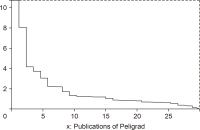
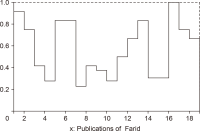


Abstract
The study analyzed bibliometric data of papers published in Korea Citation Index (KCI) and Web of Science (WoS) journals from 2002 to 2021. After examining size differences of KCI and WoS domains in the number of authors, institutions, and journals to put publication and citations counts in perspective, the study investigated co-authorship patterns over time to compare collaboration trends of Korean and international scholars and analyzed the data at author, institution, and journal levels to explore how the influences of authors, institutions, and journals on research output differ across domains. The study also conducted frequency-based analysis of keywords to identify key topics and visualized keyword clusters to examine topic trends. The result showed Korean LIS authors to be twice as productive as international authors but much less impactful and Korean institutions to be at comparable levels of productivity and impact in contrast to much of productivity and impact concentrated in top international institutions. Citations to journals exhibited initially increasing pattern followed by a decreasing trend though WoS journals showed far more variance than KCI journals. Co-authorship trends were much more pronounced among international publication, where larger collaboration groups suggested multi-disciplinary and complex nature of international LIS research. Keyword analysis found continuing diversification of topics in international research compared to relatively static topic trend in Korea. Keyword visualization showed WoS keyword clusters to be much denser and diverse than KCI clusters. In addition, key keyword clusters of WoS were quite different from each other unlike KCI clusters which were similar.


